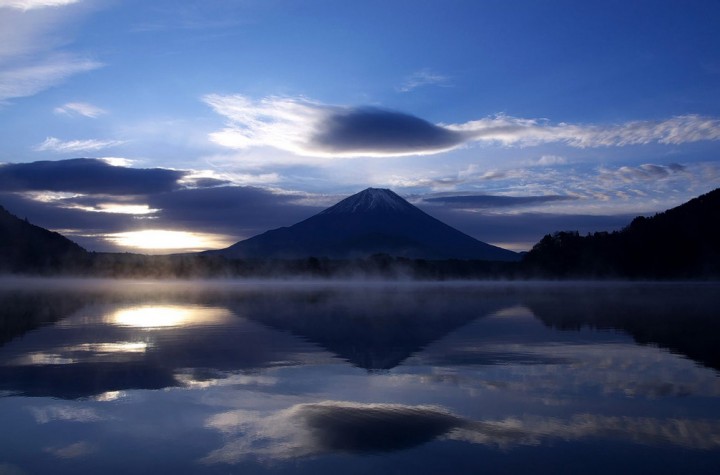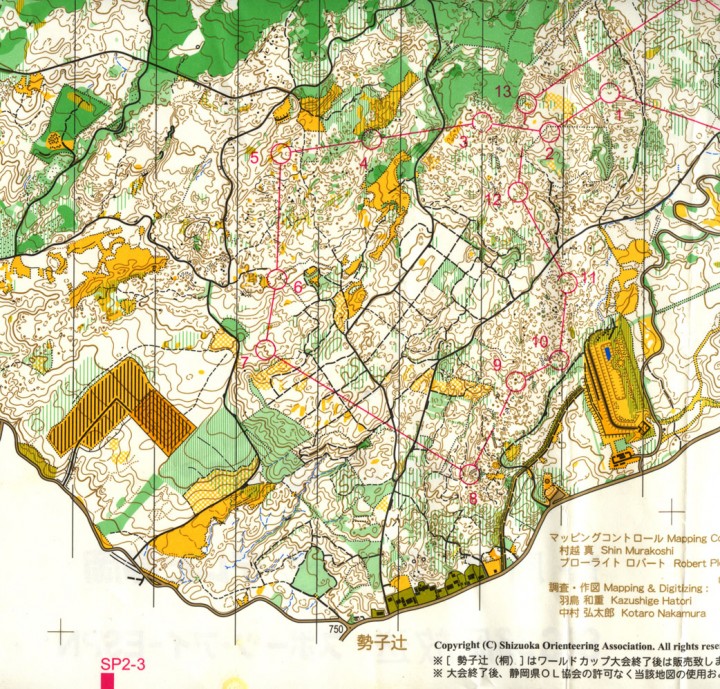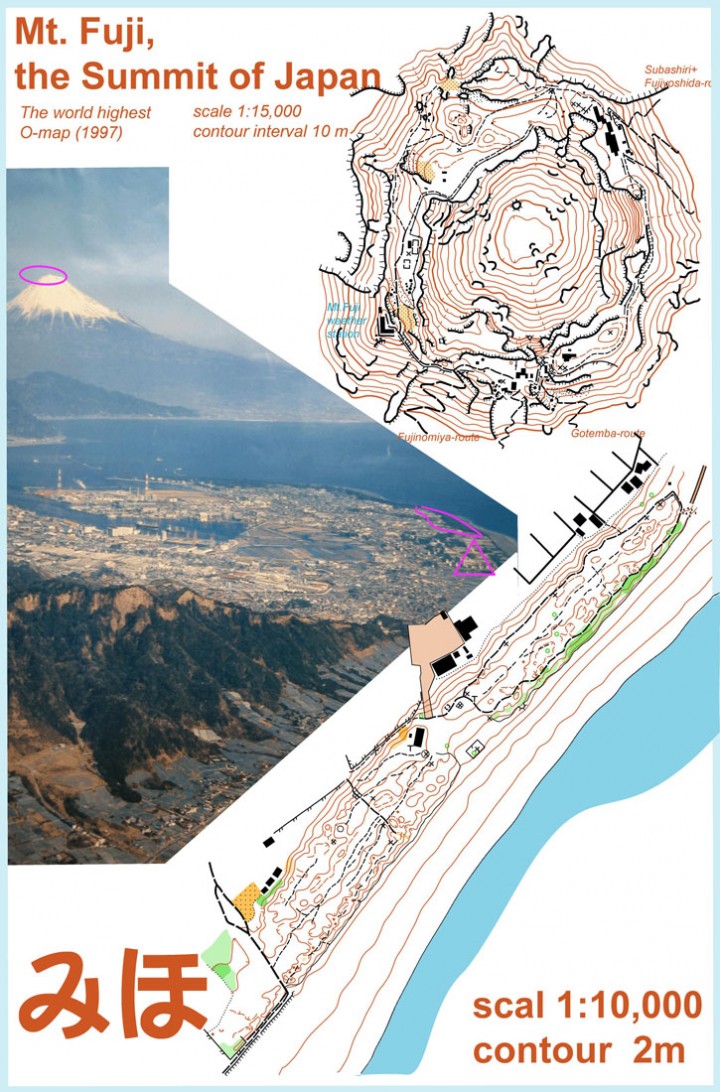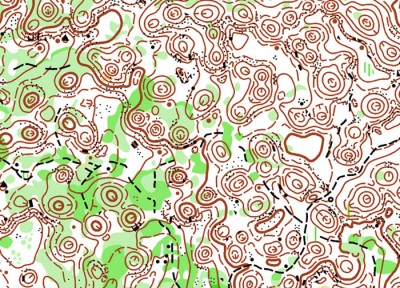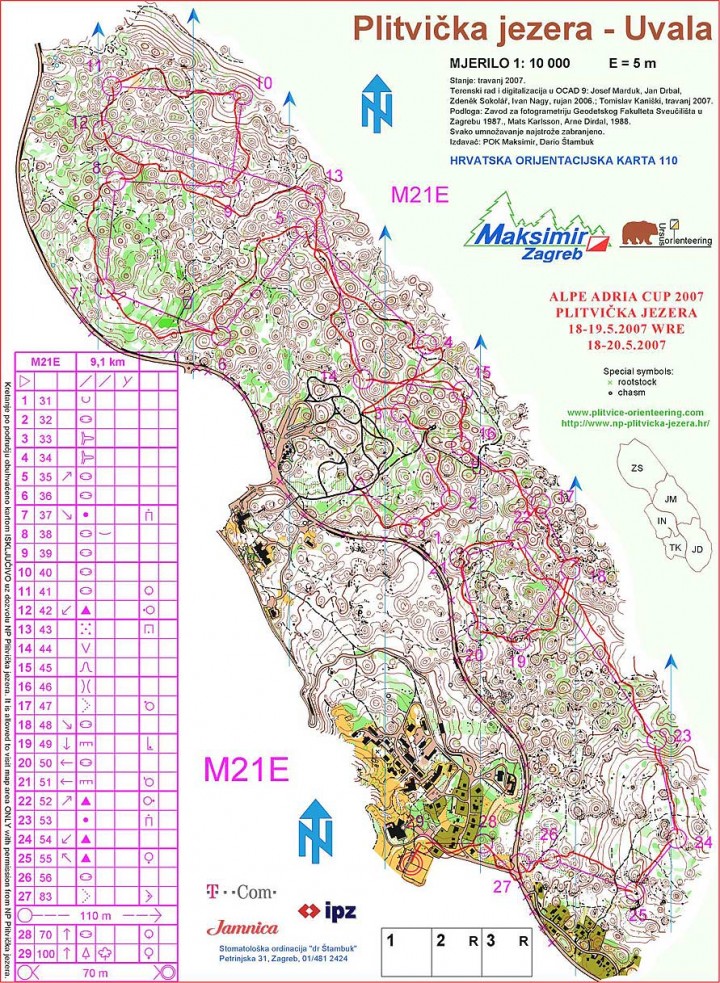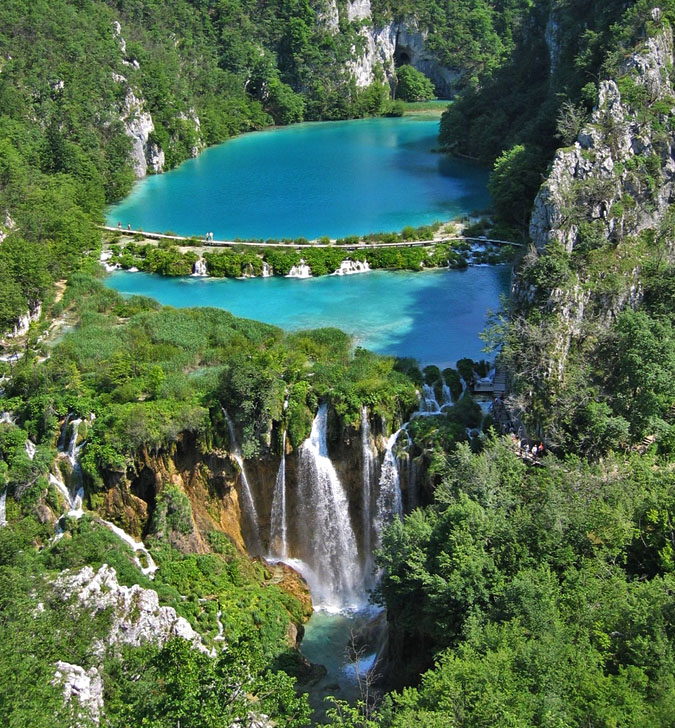Sekotsuji (Mt. Fuji 富士山)
 As it last errupted in 1707, Mt. Fuji, the highest peak in Japan and one of the 3 holy mountains in the country, is still considered to be an active volcano. Through thousands of years of eruptions lava flows produced subtle formations in lower slopes of the mountain. Uncountable knolls and small depressions make things very interesting for orienteers in quest for unique navigational challenges. Meet the Sekotsuji map!
As it last errupted in 1707, Mt. Fuji, the highest peak in Japan and one of the 3 holy mountains in the country, is still considered to be an active volcano. Through thousands of years of eruptions lava flows produced subtle formations in lower slopes of the mountain. Uncountable knolls and small depressions make things very interesting for orienteers in quest for unique navigational challenges. Meet the Sekotsuji map!
Softest terrain ever?!
The fact is that it is not easy to find a flat, runnable area suitable for orienteering in Japan. The cedar forests beneath Mt. Fuji, however, are the main exception to that – explains Rob Plowright, Japan based Australian and former coach of the Japanese national squad. There are actually several maps made in the Fuji area, but Sekotsuji is the most interesting one. The terrain there is of mixed technical difficulty – some areas are not too dense with relief features, while others are highly complex. The vegetation varies a lot affecting runability from bad to very good – and therefore gives opportunities for good route choice planning. What is quite unique about this terrain is its soft ground:
-I remember when running downhill your shoes where filled with loose earth, because of the softness of the topsoil. It was not comparable to any other forest I have visited. It’s a bit like running in sand, but even softer. Even if the physical demandings of the terrain suited me perfectly, I wanted to use the tracks a lot to vary the speed and the running surface, so I could push myself even harder when entering the soft terrain. – says Allan Mogensen for 101 orienteering maps. The legendary Dane, double World Champion, won the World cup race on the Sekotsuji map in 2000.
Photo by hogeasdf, CC-ASA License
More than just orienteering
The impressive, almost perfectly shaped cone of Mt. Fuji is one of the main symbols of Japan. It is one of the three holy mountains (the other two being Mt. Tate and Mt. Haku) and a frequent motif in Japanese art. An interesting point is that until Meji Era (1868-1912) women were forbidden to climb this sacred mountain. And perhaps even more interesting point for us, the orienteers, is the fact that right on the top of the crater there exists a real orienteering map. It was made by former Japanese national team runner Shin Murakoshi. It took him about 10 hours to make the map and he even organized a competition there. It is true it was for 3 people only, but still it was a competition! See the map below.
Why should you run on this map before you die?
So why did we choose this map as a candidate for 101 Orienteering Maps you should run on before you die? The main reason is because the volcanic formations on this terrain seem to provide interesting technical challenges. Sekotsuji seems to be the most interesting or one of the most interesting maps in Japan. The fact that the terrain is volcanic is also important as there don’t seem to be too many areas like that mapped. The map is situated right under Mt. Fuji which is an important mountain for Japan in many aspects.
| Map: | Sekotsuji |
|---|---|
| Scale: | 1: 10000 & 1:15000 |
| Equidistance: | 5m |
| Year: | 2000 |
| Size of map: | cca. 12,5 km2 |
| Mappers: | Field work: Perola Olsson, Toru Tanaka, Takao Nishio. Mapping & digitizing: Kazushige Hatori, Kotaro Nakamura. Mapping control: Shin Murakoshi, Rob Plowright. |
| Terrain type: | Volcanic, soft ground. |
| Estimated top speed: | Allan Mogensen, WC Classic event: 5.7 min/km |
| Interesting points: | Volcanic type of terrain is not very common. Mt. Fuji, Japan’s highest mountain is just above the map. |
| Links of interest: | World cup 2000 with maps and routes, Wikipedia-entry about Mt. Fuji |
| Events on map: | World cup 2000 |
| Country: | Japan |
| Location: |
Discussion
Please note that the map being presented in this article does not necessarily mean that it will also be included in the final selection of the 101 maps – and in the paper book. It only means it is currently on our candidate list.
Do you know about any other “volcanic O-maps” (Chilean Llama Volcano and French Clermont Ferrand are already on our candidate list)? Do you think another Japanese map is more interesting? Maybe those from WOC 2005 (see WOC 2005 maps here)?
Thanks
Thanks to Rob Plowright, Allan Mogensen and Shin Murakoshi for help with the article.

